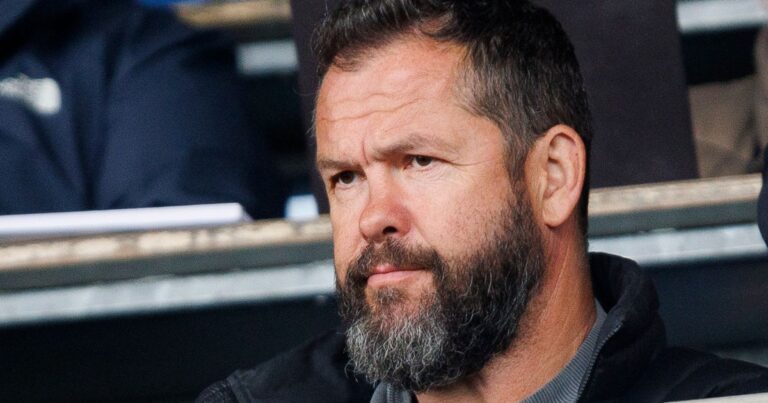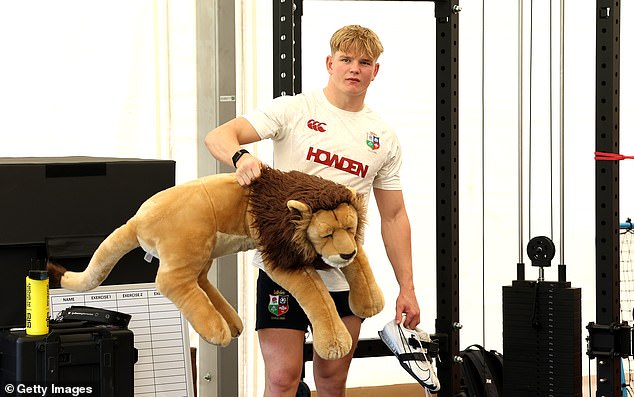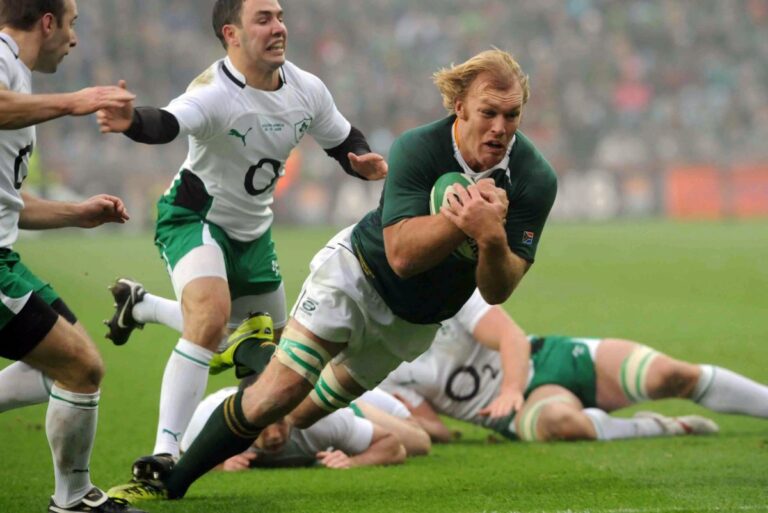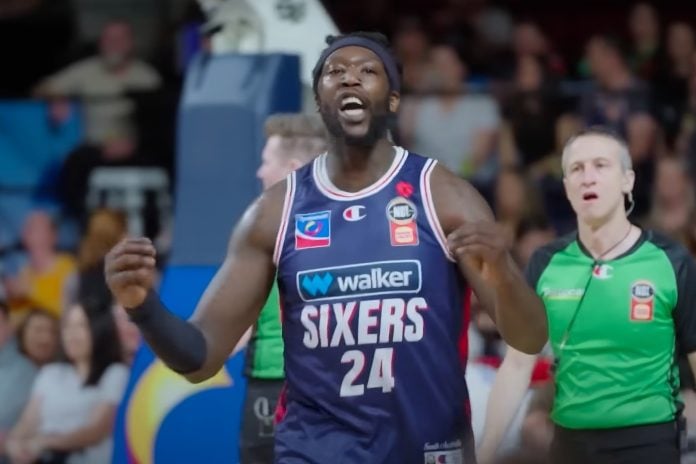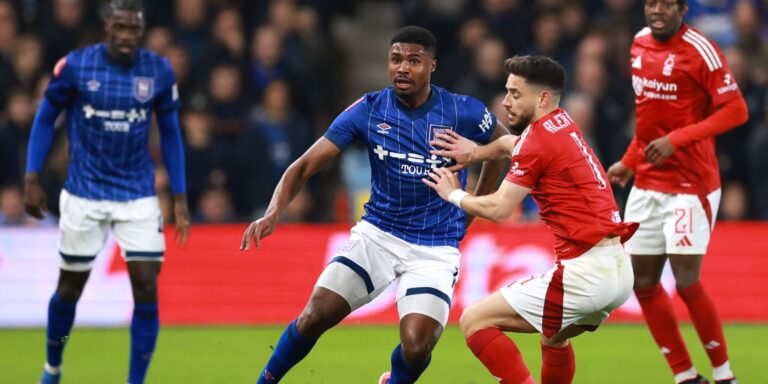
We’re staring down the penultimate weekend of Super Rugby Pacific once again, and it’s a frustratingly familiar view for Australian fans.
As was the case through the first three seasons of the new competition, the ACT Brumbies are again heading to New Zealand for a semi-final, while the Queensland Reds are a couple of days into their post-season review after crashing out in the first week of the finals series for the fourth straight year.
Though the Western Force and New South Wales Waratahs showed plenty of promise in 2025, including the not insignificant feat of all four Australian sides occupying top-six places for five weeks mid-season, their inability to see out games and find wins when put under pressure ultimately left them short of the play-offs.
Both the Force and Waratahs will have already turned their attention towards forthcoming matches against the British & Irish Lions. Their 2026 planning will begin in earnest soon after, with the priority to identify their biggest areas of concern and fix them up before next February.
For the other Australian teams, results of the first weekend of finals went in different directions, with the Brumbies confirming a semi-final date with the Chiefs in Hamilton this Saturday, and the Reds left to ponder where it all went wrong, yet again, at the same stage.

Both the Brumbies and Reds face questions after the Qualifying Finals, but only the ACT side will get a chance to address theirs straightaway.
The new six-team Super Rugby finals format has copped heat after the unlikeliest of scenarios exposed a perceived flaw, with the first-placed Chiefs allowed to host a semi-final despite losing to the sixth-placed Blues. The Brumbies’ reward for beating the Hurricanes in Canberra is to head to Hamilton and face those wounded Chiefs, and not host another knockout game in Canberra as many believe they should.
Regardless of the venue, and the travel involved to get there, there’s a couple of questions the Brumbies need to tackle this week.
Can they fix their lineout issues? (which aren’t new)
The Brumbies lost four lineouts in their 35-28 win over the Hurricanes in Canberra. All of them were to overthrows, from both starting hooker Billy Pollard and replacement Lachie Lonergan. Fortunately, they still won another 14 themselves, the same number as the Hurricanes.
And that’s worth noting, because when the two teams met back in Round 11 – a 35-29 win to the Hurricanes – the Brumbies had only seven lineouts in the match. Coupled with 40 per cent shares of both possession and territory, largely removing their main source to launch attacks was a major reason the ‘Canes were able to get away early.
The overthrows were undoubtedly frustrating, but worryingly, aren’t a new thing. Despite having the best lineout success rate in Super Rugby, ACT have had to contend with flaky lineout moments throughout the season.
As expansive and entertaining as Super Rugby has been in 2025, it’s notable the teams winning the Qualifying Finals all did it through their power game.
Interestingly, Pollard, forwards coach Ben Mowen and head coach Stephen Larkham all pointed post-match to the same fix for their throwing ills: repetitions at training.
“Some weeks we’re good, some weeks we’re a little bit off,” Larkham said. “We’ll go back through the review process and we’ll identify whether it was the throw or the call, and it’ll be a different plan for the Chiefs. There’ll be different threats next week.
“We’ve faced a few of these through the season already; it’ll be the same process to go about fixing it.”
And they will need to fix it, without doubt. While the Brumbies have been top of the lineout tree for most of the season, and they’re close to the top in terms of winning opposition ball, the closest team to them on that measure is… the Chiefs.
But the Blues also gave the Brumbies a blueprint to beating the Chiefs, stealing four of the Chiefs’ 11 lineout throws while securing 16 of their own in their last-ditch 20-19 win in Hamilton.

The Chiefs also played a surprisingly narrow game that seemed to play into the Blues defence, which also encouraged the Blues to ramp up their power game and blow through the middle of the Chiefs for the win.
The Brumbies also had three first-half power tries on the board themselves, Pollard twice steering the lineout drive over, and skipper Allan Ala’alatoa barging through for his eighth try of the season from close range.
As expansive and entertaining as Super Rugby has been in 2025, it’s notable the teams winning the Qualifying Finals all did it through their power game. The Brumbies lineout drives theirs, so fixing the issues that crept back in on Saturday is essential if they want to reach the final.
Are ACT good enough to take the next step at their fourth attempt?
The Brumbies are giving themselves every chance for success, heading to New Zealand early on Wednesday and finalising preparations over the following two days before Saturday’s semi-final.
Even though a Brumbies win, and a Blues win over Crusaders in Christchurch on Friday, would deliver a home final back in Canberra, Larkham revealed his travelling party will depart ready to spend 10 days in New Zealand.
If they can be the first ACT side to win in Auckland in 12 years, why can’t they be the first Australian team ever to win a finals match over the ditch as well?
“We saw it earlier in the season where we played the Chiefs into the Blues, Rounds 3 and 4, and staying over there was really beneficial for us,” he said, referencing how his side won 21-20 in Auckland six days after a 49-34 loss to the Chiefs. “We probably caught the Blues hopping a little bit, not quite on their game at the start of the season, but it was a really good preparation from our perspective.”
Having recorded their first win at Eden Park since 2013, the Brumbies will take confidence from winning pressure games into the semi-final. If they can be the first ACT side to win in Auckland in 12 years, why can’t they be the first Australian team ever to win a finals match over the ditch as well?
Certainly, they’re playing well enough. Tightening up their defence has halved the number points conceded in the second half of the season, and their power game has been delivering when it matters.

“Not letting them in (to your own 22) is the easiest way to stop the Brumbies maul,” Hurricanes coach Clark Laidlaw volunteered after his side’s defeat on Saturday. “Once they’re in there, with the modern rules and the offsides, the pick-and-go, it’s really difficult to then hang in there and keep teams out.
“Just look at the Blues (against Chiefs). They just go multiple penalties, multiple offsides, advantages. It’s a really difficult part of the game once you let teams in.”
So they have the tools available, and they certainly won’t be as loose again as they were in the Hamilton loss back in Round 3. Whether they get themselves into position to secure another piece of history, that’s what Australian rugby is sweating on.
Are the Reds smart enough to adapt game-plan when their attack is nullified?
A disappointing showing for the Queensland Reds saw them go out in the first week of the Qualifying Series for a fourth straight year, going down 32-12 to the Crusaders in a contest where their only points came in the last 10 minutes, long after the game was decided.
It puts significant pressure on Les Kiss now, who after being unveiled as the Wallabies coach for next year, still has to produce a Super Rugby season that matches expectations of the current playing group.
The Reds lost six games before the play-offs, and aside from the defeat by the Fijian Drua in Suva in Round 12, the other five bear further inspection.
For all the complaints about Crusaders players constantly being off their feet at the breakdown, none of them recognised this was yet another smarter breakdown team pushing the limit of what they could get away with.
Those five losses – to Crusaders in Round 4, the Chiefs and Brumbies (Rounds 9 & 10), and the Brumbies and Hurricanes (Rounds 14 & 15) – shared the same traits and failings as Friday’s defeat by the Crusaders.
Putting aside the point that all of those losses came against higher-ranked teams, the common element in each was a strong breakdown team pressuring the Reds at the ruck contest, slowing down the supply of quick ball that scrum-half Tate McDermott and the Reds’ game is built around, requiring more attacking players for a clean-out, which in turn leaves fewer players available for the next ruck, and thus open to turnover.
Similarly, in defence, the Reds found their on-ballers under constant pressure from waves of clean-out, thus further nullifying the impact of Fraser McReight and company.

The top teams knew this and once they had neutered these hallmarks of the Reds game, it was just a matter of letting the scoreboard get away from them.
For all the complaints about Crusaders players constantly being off their feet at the breakdown, none of them recognised this was yet another smarter breakdown team pushing the limit of what they could get away with.
And whether that’s correct officiating or not (I’d argue the referee in question and several of his countrymen have allowed this all season), the point is that it was a known entity and the Reds could not adapt to the game being played in front of them.
Smarter teams make those adaptions. Stronger breakdown teams work out ways to counter these methods, on either side of the ball.
Why can’t this playing group get past the first week of finals?
That inability to adapt partly answers this second question, and on the evidence of this and the last few years, it’s hard to see how this current Queensland squad reaches the top four, the semi-finals and beyond.
So much of this group have played a lot of rugby together, many of them tracing their routes back a decade or more via the Reds academy, the two Queensland NRC teams, and even Junior Wallabies campaigns.

Adding the quality personnel they did in 2025 only made them stronger across the squad, yet the same issues prevail. Throw in a scrum that went backwards from the outset on Friday, essentially, and it’s yet another question for them to answer.
Injuries quickly get thrown up at points like this, but the reality is the Reds’ injury list is no longer than any of the other top teams involved in finals on the weekend. Queensland’s 38 players used in 2025 mirrors the tallies of the Chiefs and Blues, and trails both the Hurricanes (39) and Crusaders (40). Only the Brumbies’ 34 differs on this front.
When Brad Thorn announced in 2023 that he wouldn’t be continuing as Queensland coach, he was asked if the playing group needed a new voice after his six years in charge.
“Yeah, possibly,” Thorn said in in a typically selfless response. “Whatever is good for the club, and a change is as good as anything. For both me and the club.”
There’s now a national spotlight on whatever the Reds can or can’t achieve in 2026.
A noted competitor, who as player thrived on physicality that he then worked hard on installing in teams he coached, Thorn’s words two years later carry an intriguing sub-plot to them. Did his methods reach their use-by date with this group, or were they not actually equipped to reach the levels of physicality he wanted?
Having previously written of the Reds’ lower gainline success rate relative to the rest of the competition, these questions around their breakdown capabilities make me wonder about this playing group even more now.
And it’s not just Queensland fans that need to see these improvements either. There’s now a national spotlight on whatever the Reds can or can’t achieve in 2026.
